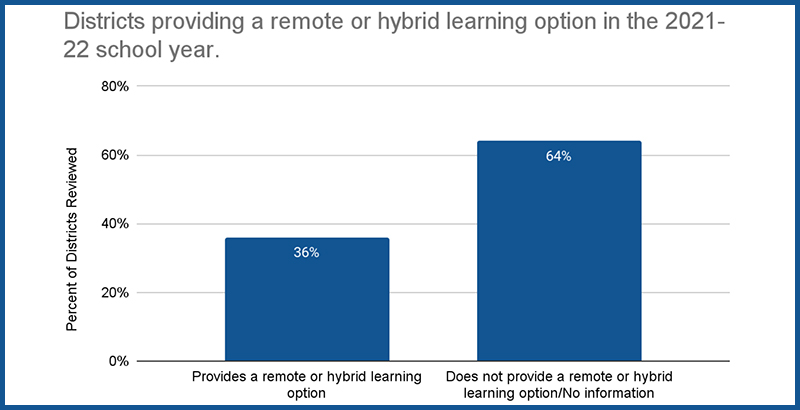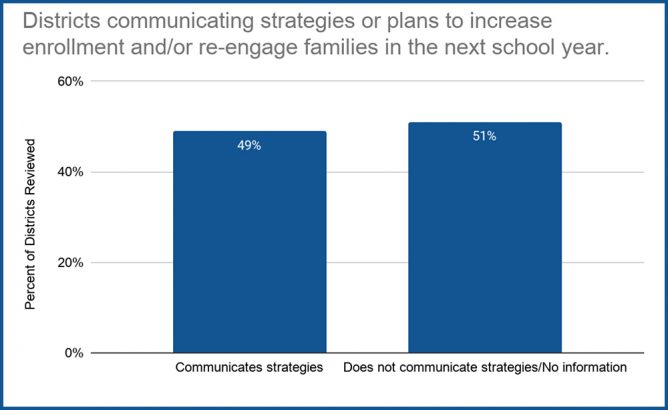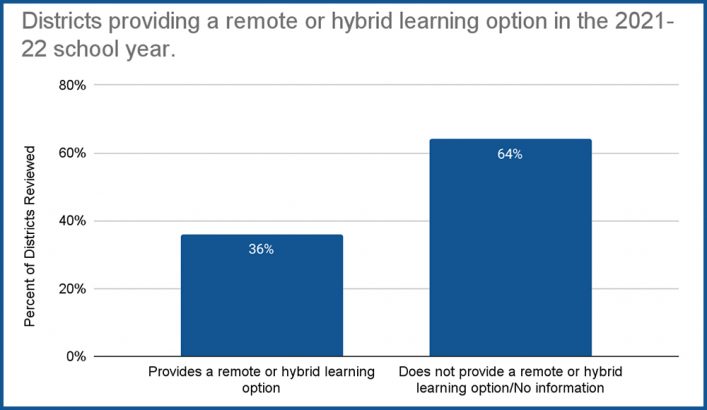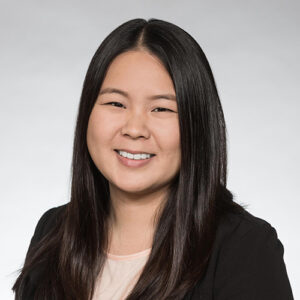Analysis: Many Kindergartners Aren’t Showing Up as Schools Reopen in Person. How Some Large Urban Districts Are Trying to Re-engage Families

Get essential education news and commentary delivered straight to your inbox. Sign up here for The 74’s daily newsletter.
While most schools are back in person this spring, they continue to grapple with lagging enrollment. Pre-K and kindergarten have been hit especially hard. California’s missing kindergartners, for example, are driving the state’s largest K-12 enrollment drop in 20 years.
Yet at all age levels, an unprecedented number of families chose to keep their children home during an uncertain year. The percentage of Black families choosing homeschool jumped fivefold since last spring. Others found stability by enrolling their children in new options, like virtual schools and learning pods.
Because enrollment dictates district revenues and budgetary planning processes, losing families has financial consequences. While districts will benefit from short-term federal relief next year, unaddressed enrollment losses could drive long-term revenue reductions. Districts also face uncertainty stemming from other funding sources, which can lead to even more lost revenue. For example, Prince George’s County Schools in Maryland not only expects to lose $34.6 million due to an enrollment shortage of approximately 1,700 students, it also expects other state funds to end, leading to a $170.5 million budget gap next year.
How are districts tackling disenrollment among families? The Center on Reinventing Public Education’s latest review of 100 urban and large districts finds decidedly mixed results: About half (49) have communicated strategies or plans to re-engage pre-K and kindergarten families in the next school year and, hopefully, increase enrollment.

Some of the most common strategies:
- Nineteen districts adapted to a remote setting by hosting virtual open houses and shifting their registration process online to better accommodate families and meet health and safety guidelines. California’s Long Beach Unified School District converted enrollment and school information events (e.g., Education Celebration and KinderFest) to a virtual platform this year. Duval County Public Schools in Florida created a live chat feature on its website to enable families to speak with a school choice specialist during the enrollment period.
- Seventeen districts are involving families in the decision-making process for next year. Some, like North Dakota’s Bismarck Public Schools, are surveying their remote families on whether they would return in person in the fall, and plan to use the data to inform offerings in the next year. Others, like the District of Columbia Public Schools, are using community consultations and school-by-school outreach to actively engage families in decisions about reopening for future school years.
- Ten districts are making a concerted effort to capture projected increased interest in pre-K and kindergarten. Cypress-Fairbanks Independent School District in Texas identified lower enrollment in pre-K and kindergarten as the biggest reason for reduced enrollment this year, and is trying to recruit families for next year through extensive outreach, including in-person visits. Likewise, North Carolina’s Guilford County Schools hosted a “Hello Kindergarten” week, where it aired a series of videos depicting a typical kindergarten day.
Districts should also anticipate that some students will not return to in-person schooling next year. This spring’s student attendance and family survey data indicate nearly a third of families prefer remote or hybrid learning, even when given an in-person option.
Thirty-six percent of districts we reviewed plan to offer remote or hybrid learning next year — evidence of what may be an enduring change among many urban and large districts. RAND’s fall survey of superintendents found 20 percent were interested in offering remote learning after the pandemic, and 7 in 10 educators expect to have a “much wider array” of remote options.

Twenty-three of these districts are using virtual academies that existed before the pandemic. Both Des Moines Public Schools in Iowa and the DeKalb County School District in Georgia, for instance, have virtual campuses for high school students and plan to expand them to include middle schoolers in the upcoming school year.
Meanwhile, 13 districts have created new programs to accommodate families who prefer remote learning. Jeffco Public Schools in Colorado announced it will offer a virtual option for the 2021-22 school year, with live instruction from dedicated remote-learning teachers. Montgomery County Public Schools in Maryland also plans to offer a remote learning program for its pre-K through 12th grade students next year called Montgomery Virtual, which will partner with students’ schools to provide both academic and social-emotional support. Additionally, after learning that some families preferred remote learning (and that some remote students scored highest on academic benchmarks during the pandemic), Oklahoma City Public Schools plans to continue to offer its new e3 Online Learning program, incorporating more live instruction.
With teachers experiencing burnout and lower morale this past year, some districts are also adjusting staffing for their remote and hybrid learning programs. In Georgia, Cobb County School District’s remote classes will have dedicated instructors — a notable change from this school year, when teachers taught in-person and remote students simultaneously. Likewise, Austin Independent School District in Texas will have their teachers instructing either remotely or in person, rather than doing both at the same time.
With the 2021-22 school year on the horizon, districts must make a greater effort to re-engage families who have enrolled elsewhere during the pandemic, as well as those who prefer to remain remote next year. These families are not looking to return to the old normal.
Federal stimulus dollars shouldn’t be treated as a Band-Aid to plug revenue gaps from potential enrollment declines next year. While the money does not provide a solution on its own to districts’ enrollment woes, it does offer opportunities to create new or revamped offerings with the potential to recapture many families.
We recommend these strategies for districts to consider to curb declining enrollment in the next school year and beyond:
- Expand school choice options by developing partnerships with charter and magnet schools. Aurora Public Schools in Colorado tackled declining enrollment before the pandemic by building out more school options via magnets, with hopes of drawing more families back in with choice.
- Consider flexible hybrid options for high school students that balance the strengths of in-person and virtual learning.These blended options could offer off-campus internships, counseling and peer groups, and flexible schedules on students’ virtual learning days.
- Re-engage and build trust with families by involving them in school-year planning and creating more stakeholder decision-making structures.
- Improve accessibility by offering multiple points of communication.Allowing families to attend virtual enrollment information sessions and register for the school year online can help recapture families with busy schedules.
- Provide remote and hybrid learning as an option for all students. There is clear interest in these programs beyond the current school year, especially among students of color. All learning models must be given the same attention as in-person schooling, and students who choose these options should have access to quality curricula, nonacademic enrichment (e.g., sports) and opportunities for peer engagement. Districts must forge a community within their remote and hybrid programs if they want to build student engagement.
Families have discovered the options beyond in-person traditional schooling, and districts must respond by working to ensure students in these alternative pathways get the same attention as their peers. Districts that hesitate to provide more customized, quality options for families not only risk a continued decline in enrollment, they also might contribute to a widening opportunity gap at a perilous time.
Lisa Chu is a research analyst at the Center on Reinventing Public Education. Evelynn Michaud-Spangler is a student at University of Washington Bothell.
Get stories like these delivered straight to your inbox. Sign up for The 74 Newsletter

;)
